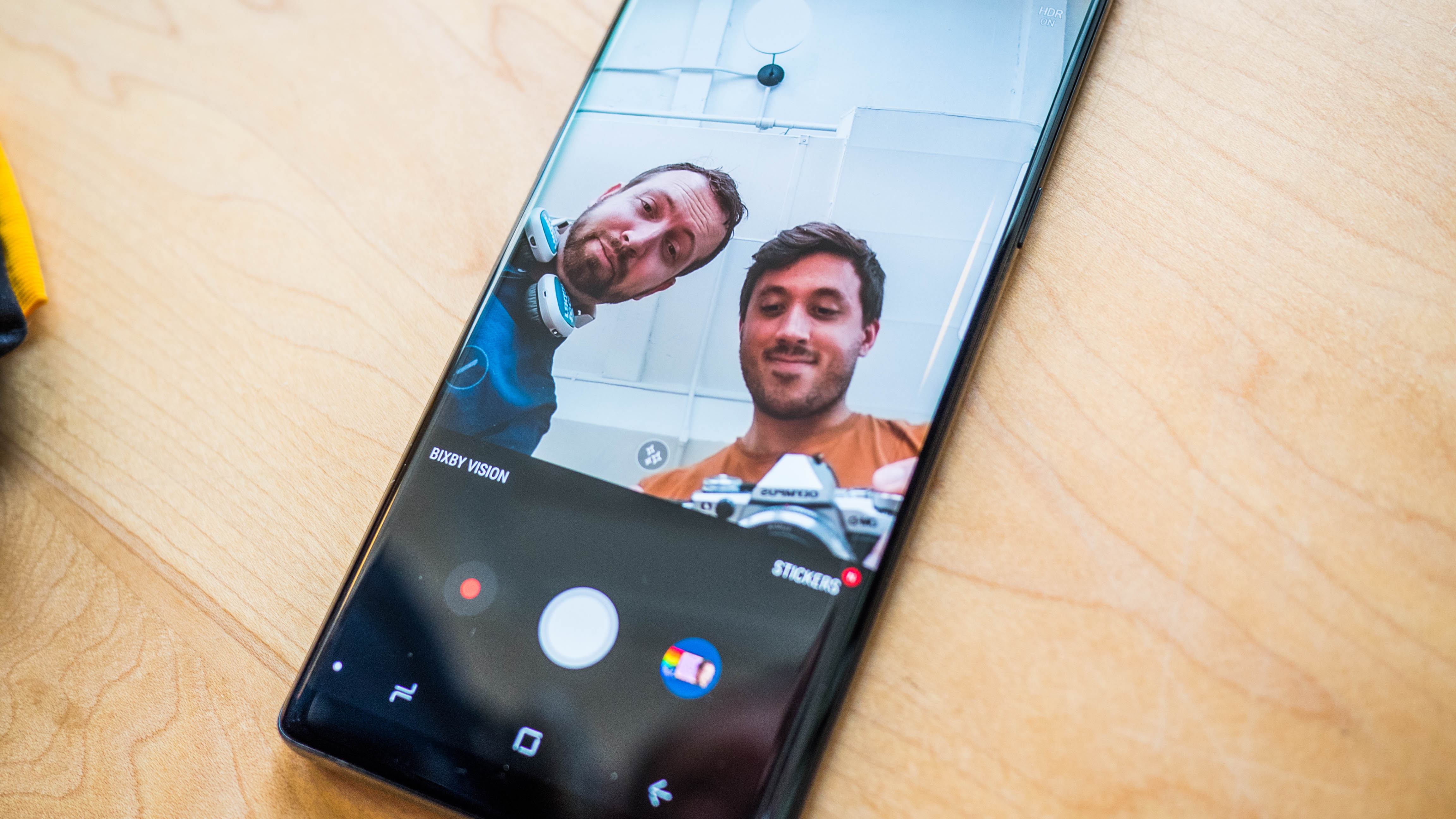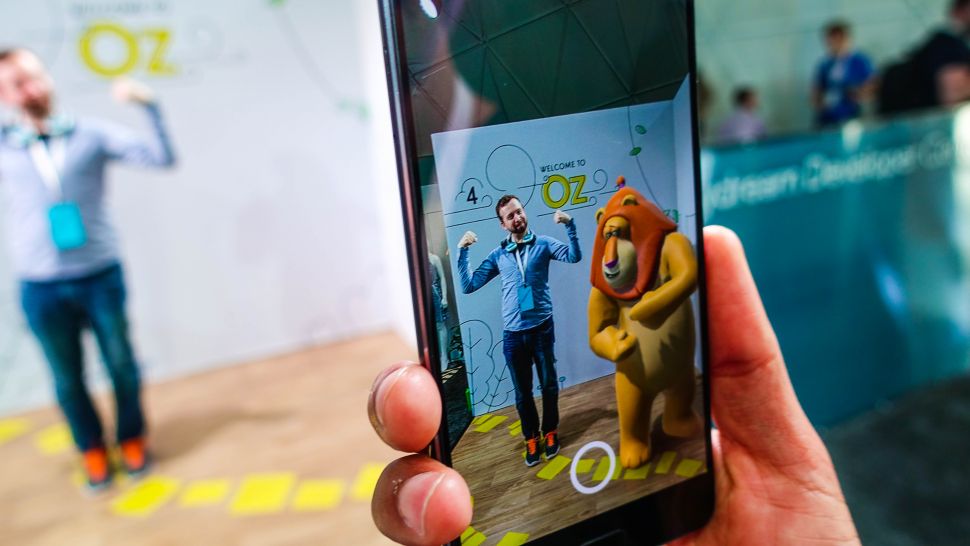10 iPhone 8 features that have Apple imitating more than innovating
Not homegrown Apple features, but cool nevertheless
No one can deny Apple’s rich history of innovation. But sometimes, its inspiration couldn’t be more clearly rooted in what its competition has already tackled.
Ahead of the hugely anticipated launch of the iPhone X, iPhone 8 and iPhone 8 Plus, we’ve noted what Android has pulled over from iOS.
But now, it’s time to take a look at how iOS 11 and Apple’s new devices appear to have “borrowed” from devices and apps that have come before.
Face scanning

Probably the most hyped feature coming to at least the iPhone X, face scanning cameras have been available for some time in Android smartphones made by Samsung, and in a plethora of laptops secured with Windows Hello.
But even if Apple isn’t the first, its effort will supposedly be backed by a biometrics security company that it purchased earlier in the year that can push it above the competition. If so, the iPhone X will be the most secure smartphone around, one that can’t be fooled by a still image, unlike the Samsung Galaxy Note 8.
A glass back
Adding a glass back to a smartphone in lieu of aluminum is partly a design choice. The LG G6 and the Samsung Galaxy phones from recent years come to mind. There’s a good chance, based on a ton of rumors, that the iPhone X will, too, look more premium at the expense of becoming a fingerprint hog.
But it’s also a move to enhance the new phone’s functionality. This leads up into our next point where Apple has borrowed some tricks.
Sign up for breaking news, reviews, opinion, top tech deals, and more.

Wireless charging
Charging your phone sans wire has been a relatively mainstream feature for around five years, but Apple is looking to finally make it part of its offering.
While wireless charging isn’t necessarily the fastest or most affordable means of charging your smartphone, adding the contactless standard to its next iPhone would bring it into the future, along with many flagship Android smartphones, like the LG V30 and Samsung Galaxy Note 8.
Bezel-less display
Trimming away at the bezels of smartphone displays has been the obsession of manufacturers across the globe and Apple appears to have caught the bug.
Following in the alluring footsteps of the likes of the LG V30, Samsung Galaxy S8, Xiaomi Mi Mix and the Essential Phone, the iPhone X will be almost all-display in the front.
Even if it’s not the first phone to execute on this vision, Apple is likely to put its own unique spin on the bezel-less look.
An AMOLED display
Apple has done well with its LCD displays in years, but as more budget players, like the Asus Zenfone Zoom 3, enter the AMOLED playing field, now seems like the perfect time for Apple to do so as well.
There has been a lot of back and forth as to which manufacturer Apple is tapping to supply OLED screens for the iPhone X and iPhone 8 lineup. Given that Samsung and LG are strapped enough making OLED-packing smartphones of their very own, there’s word going around that Apple’s interest has caused a global shortage.
But there’s little reason to worry. This is Apple we’re talking about here. It might be late to the AMOLED party, but we’ll just be glad that it shows up.

Augmented reality
Like bezel-less displays, the integration of augmented reality is a relatively new addition to smartphones. Getting its first stab at the mainstream audience in Sony phones and select Tango-enabled devices, the Lenovo Phab 2 Pro and the Asus Zenfone AR, ARKit is bringing the onslaught of AR content to Apple’s side of the garden.
We expect to see a big showing for augmented reality at Apple’s event, since we were shown but a mouth-watering sample at WWDC 2017 just a few months ago.
A dual-lens camera
OK, so the new iPhone won’t even the first iPhone to have two cameras on its back, but let’s not forget that even before the iPhone 7 Plus hit the market, there were plenty of dual-lensed options available.
Granted, the shift in focus from simply providing multiple field of views (LG) and gathering more color data (Huawei) to taking advantage of the depth of field effect provided by utilizing two lenses wasn’t in full swing until Apple entered the game.

On-screen home button
Given the push for bezel-less displays, it’s tough to find a spot for much else – especially a fingerprint sensor. If you’re an Apple fan, you know how integral the home button is to the iPhone, but there’s a good indication that it might get squeezed out.
Earlier this year, the Samsung Galaxy S8 made the shuffle of its fingerprint sensor to the back, though the home button is still in a logical location and it’s looking more likely that the iPhone X will do the same.
Customizable control panel
Android has long held the crown as the customizable operating system, but slowly and surely, iOS has become quite the tweakable platform.
The new iPhone won’t bring much of a change here, but the software it’s running, iOS 11, is set to bring a user-customizable control panel that grants you the ability to drill into a bunch of settings from one convenient place.

Animoji
Set to be the next phenomenon, Animoji could be for the iPhone X what masks did for Snapchat. Although slightly different in that Animoji don’t paste over your face, the new iPhone’s rumored face detecting camera will let you bring emotion to the previously-stale emoji.
In a sense, you become the emoji. Its brow lifts when yours does. When you smile, so will the emoji. It’s like playing pretend, but taken to a whole new level.

Cameron is a writer at The Verge, focused on reviews, deals coverage, and news. He wrote for magazines and websites such as The Verge, TechRadar, Practical Photoshop, Polygon, Eater and Al Bawaba.